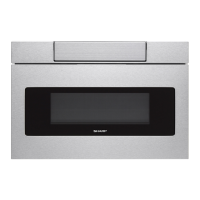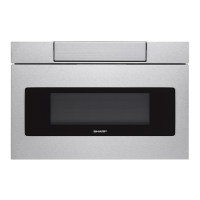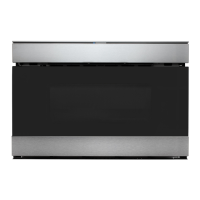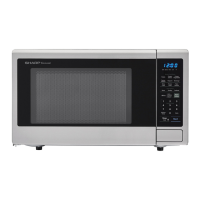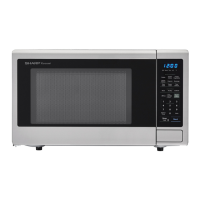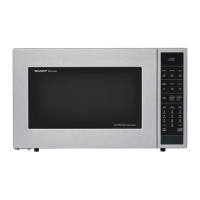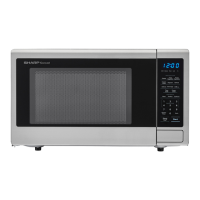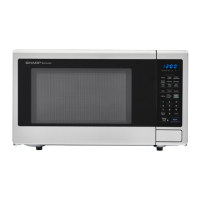9 E
E
E
E
E
• Speed cook. This cook setting uses a low percentage
microwave power
plus convection heating which allows
placements on racks. Follow instructions as noted under
Speed Cook.
ALSO NOTE:
• Watch cooking time. Cook for the shortest amount of time
indicated and add more as needed. Food severely overcooked
can smoke or ignite.
• Do not use metal dishes for microwave cooking. There is a
risk of electric discharge or ignition.
• Cover foods while cooking. Check recipe or cookbook for
suggestions, such as paper towels, wax paper, microwave
plastic wrap or a lid. Covers prevent spattering and help
foods to cook evenly.
• Stir foods from outside to center of dish once or twice during
cooking, if possible.
• For best microwave cooking results, please ensure that the
food to be microwaved is placed in the center of the oor of
the microwave drawer. Do not elevate or place on the rack.
• Turn foods over once during microwaving to speed cooking
of such foods as chicken and hamburgers. Large items like
roasts must be turned over at least once.
• Rearrange foods such as meatballs halfway through cooking
both from top to bottom and from right to left.
• Add standing time. Remove food from Convection
Microwave Drawer and stir, if possible. Cover for standing
time to allow food to nish cooking without overcooking.
• Check for doneness. Look for signs indicating that cooking
temperatures have been reached.
Doneness signs include:
- Food steams throughout, not just at edge.
- Center bottom of dish is very hot to the touch.
- Poultry thigh joints move easily.
- Meat and poultry show no pinkness.
- Fish is opaque and akes easily with a fork.
ABOUT SAFETY
• Check foods to see that they are cooked to the United States
Department of Agricultureʼs recommended temperatures.
145˚F - Fish
160˚F - Pork, ground beef/veal/lamb, egg dishes
165˚F - Whole, pieces and ground turkey/chicken/duck
Leftover, ready-to-reheat refrigerated, deli and
carry-out fresh food
To test for doneness, insert a meat thermometer in a thick
or dense area away from fat or bone. NEVER leave the
thermometer in the food during cooking, unless it is approved
for microwave use.
• ALWAYS use potholders to prevent burns when handling
utensils that are in contact with hot food. Enough heat from
the food can transfer through utensils to cause skin burns.
• Avoid steam burns by directing steam away from the face
and hands. Slowly lift the farthest edge of a dish’s covering
INFORMATION YOU NEED TO KNOW
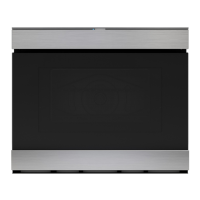
